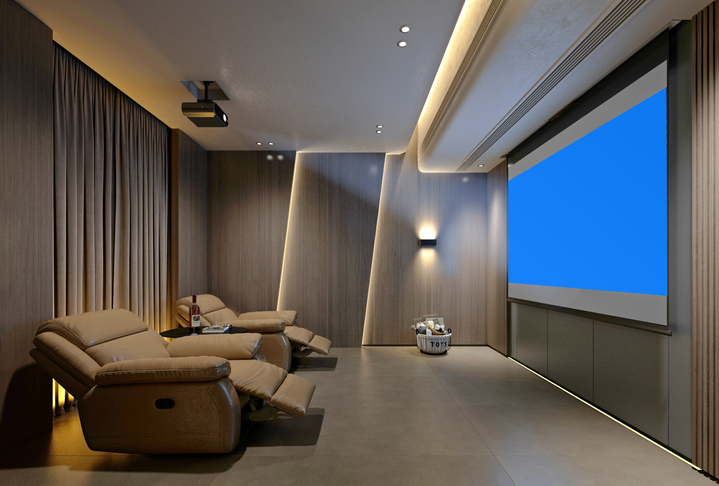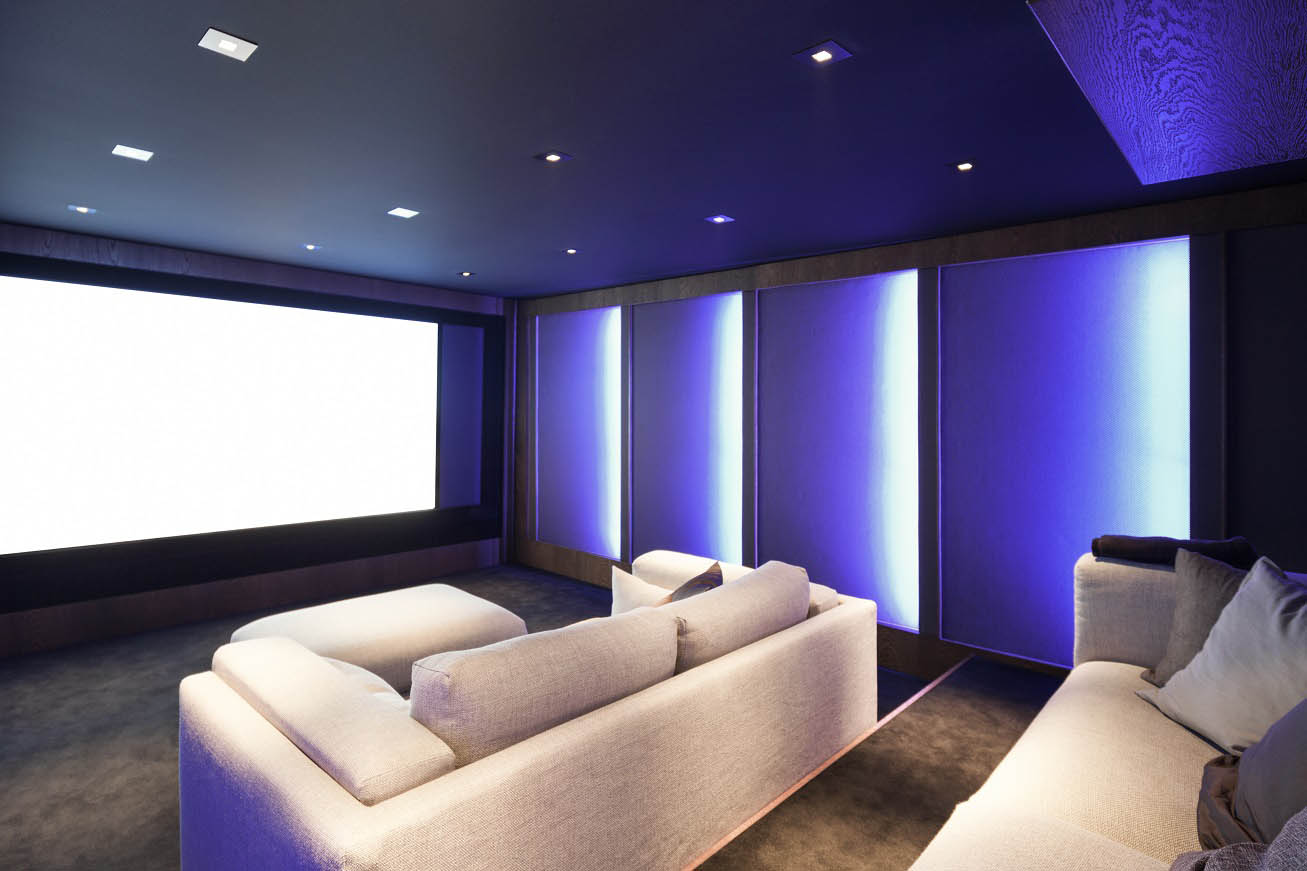Top Reasons to Choose Home Theater Tampa for Your Upcoming Project
Wiki Article
Home Theater 101: Whatever You Required to Know for a Cinematic Experience at Home
Creating a home theater that matches the cinematic experience of a business theatre includes cautious factor to consider of several components, consisting of screen option, audio systems, and space layout. Each aspect plays a crucial function in attaining the desired setting and functionality. Whether you are contemplating the suitable display dimension or the details of surround noise, understanding these fundamentals is important. As we explore these critical parts, it ends up being evident that the choices made can significantly impact your total watching experience, leaving one to contemplate exactly how these choices will certainly shape your individual cinema.Choosing the Right Screen
When setting up a home movie theater, choosing the right screen can make or damage the seeing experience - tampa home theater installation. The display functions as the centerpiece of your configuration, affecting image quality, checking out angles, and overall visual. Trick elements to consider include screen size, type, and resolutionInitially, identify the suitable display size based on your space dimensions and seating distance. Next off, pick in between different display kinds, such as fixed-frame, mechanized, or retractable displays, each offering unique benefits.
Resolution is an additional critical element. For an absolutely immersive experience, think about a screen designed for 4K and even 8K web content, guaranteeing sharpness and clearness. Additionally, think about the display's gain, which impacts illumination and contrast; a higher gain can enhance illumination in well-lit areas, while a reduced gain might be preferable for darker atmospheres.
Selecting Sound Equipment
Audio devices is an essential component of any home theater system, considerably enhancing the overall watching experience. The selection of audio equipment can figure out the deepness, quality, and immersion of audio, critical for creating a motion picture environment.When picking audio devices, think about a border stereo, which usually includes a receiver, several speakers, and a speaker. A 5.1 or 7.1 channel system is suggested, where the first number stands for the speakers and the 2nd the subwoofer, providing an immersive soundscape. The receiver is the heart of the system, managing sound and video clip signals, and must support modern-day layouts like Dolby Atmos for an improved spatial experience.
Quality audio speakers are necessary; try to find versions that use a well balanced audio profile with excellent bass feedback. Floor-standing speakers can generate richer noise, while shelf options conserve room. Additionally, consider wireless choices for convenience of setup, although wired systems usually deliver remarkable performance.

Optimal Seating Plans
Developing an excellent home cinema experience hinges considerably on ideal seating plans. The arrangement of seats plays an important duty in both convenience and watching quality, straight impacting the general cinematic experience.First, consider the screen dimension and viewing distance. An usual standard is to position seats at a distance around 1.5 to 2.5 times the angled dimension of the screen. This makes certain an immersive experience without straining the eyes.
Following, elevation is critical. If your seating remains in a tiered format, the back rows need to be more than the front to prevent obstructions. For level seating, make sure that the front row is not too near the display, and that every person has a clear view.
Moreover, think about the setup in terms of social dynamics. Team seats can enhance the communal experience, while specific seats might be preferred for personal watching.

Finally, focus on convenience with ergonomic seating that sustains extended viewing periods. Incorporating recliners or supported seats can dramatically enhance the experience, making the home theater a preferred destination for both home entertainment and relaxation.
Lighting and Setting
Reliable lights and setting are vital components of a properly designed home movie theater, as they dramatically affect the checking out experience. The best illumination can boost the motion picture feel, while poor options can diminish it. For optimum outcomes, take into consideration a layered illumination approach that consists of ambient, task, and useful content accent lighting.Ambient illumination provides basic lighting, ensuring that the space is not completely dark, which can strain the eyes. Dimmer buttons are highly advised, enabling adjustments based upon the material being seen. Task lights, such as wall surface sconces or flooring lamps, offers functional illumination for activities like analysis or navigating the room without interfering with the total atmosphere.
Accent lights can be used to highlight architectural attributes or create focal points, adding depth and rate of interest to the space. LED strip lights behind screens or along racks can supply a subtle glow that improves the visual experience without overwhelming the customer.

Wiring and Installation Tips
A well-planned wiring arrangement is important for achieving optimal performance in your home movie theater system. Appropriate circuitry not just guarantees premium audio and video signals yet also boosts the general visual of your room. Begin by mapping out your format, recognizing where each element will be placed, including your display, speakers, and receiver.When picking cable televisions, prioritize high-quality, appropriately determined electrical wiring to minimize signal loss. HDMI cords need to be used for video connections, while audio speaker cord must match the specifications of your speakers and amplifier. Select in-wall ranked wires to follow security requirements and keep a tidy look.

Verdict
site In recap, developing an extraordinary home movie theater experience calls for mindful consideration of various aspects, including screen option, audio tools, seating plans, illumination, and electrical wiring. By prioritizing these aspects, a cinematic atmosphere can be successfully reproduced, allowing for immersive viewing experiences that rival standard cinema setups.Producing a home cinema that rivals the motion picture experience of a business theater involves careful factor to consider of several parts, including screen option, audio systems, and area design.When establishing up a home theater, selecting the right display can make or break the seeing experience. Next off, choose in between different screen types, such as next page fixed-frame, motorized, or retracting displays, each offering distinct advantages. For an absolutely immersive experience, take into consideration a screen developed for 4K or even 8K material, making sure intensity and quality.In recap, producing a phenomenal home cinema experience requires cautious factor to consider of numerous components, consisting of screen choice, audio tools, seating plans, lights, and electrical wiring.
Report this wiki page